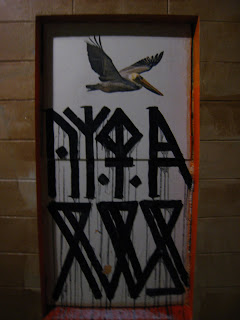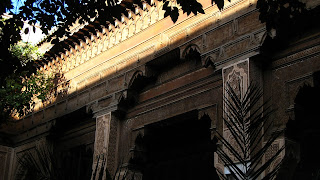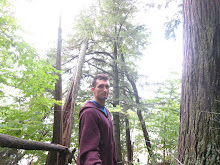My friend from Hawaii (now Maryland), Dan, came to Europe recently for a work trip and a wedding in Italy. We were able to schedule some travel into the mix.
We spent about 10 days in Turkey and Greece; the majority of the time being in Turkey. The trip involved a lot of planes, trains, and automobiles. Well, no trains because the Greeks were on strike. Planes, buses, and automobiles, I suppose.

En route to Greece, I had a work trip to Germany. From there I took a flight to London to meet Dan. After a very expensive bus ride from Heathrow to Gatwick (twice the price of my train ride a week later from London to Harrogate), I made a few laps around the airport in search of Dan. Gatwick, being a "budget airline" hub, is an interesting place. It was like a refugee camp, in a way. Dozens, if not hundreds, of people sleeping every which way around the airport waiting for flights that leave at ridiculous hours (ours was scheduled to depart at 5:50am). Dan and I were two of the refugees. After moving around a couple of times, we settled in by some scales for some reasonably comfortable sleep. I think they were plugged in and were generating some heat, which was nice.
We spent day one in Greece walking around Thessaloniki. As I mentioned before, none of the trains were running, but we were able to schedule an overnight bus to Turkey for that first night. We had a whole day to walk around and see the sights, but all of the museums were closed, I am guessing due to the strikes. So what do you do when there is nothing to see or do besides walk around? Grab some Greek beer and wine and check out the open air ancient sites as well as the graffiti from the anti-government folks.
The bus ride to Istanbul was mostly uneventful, minus the fact that a guy in a bow tie kept waking me up and telling me to sit next to Dan. The bus was mostly empty, but he did not like the fact that I was trying to sleep lying down. Getting 20 minutes of sleep at a shot, then getting woken up and told to move (then moving back again for another 20 minutes) gets old pretty quick.
We didn't spend much time in Istanbul that first day. We met a guy at the airport to pick up the rental. The transaction involved someone driving the car up to the curb, Dan signing some papers, then everyone disappearing and we had our car. From there we filled up the empty car (at $9.50 a gallon) and started west towards Gallipoli. Fuel was expensive, but we slept in the car and got fresh fruit, vegetables, and bread (as well as a lot of pickled foods) from markets as we went. Long story short, our goal was to spend less on this trip than the hotel cost from when I went to the Beltane Fire Festival at the end of April in Edinburgh. We succeeded.

At any rate, from Galipoli we took a ferry across into the Asian side of Turkey and make our way towards Troy. By the time we got there, the site was closed. Rather than wait overnight to see a replica of a wooden horse (the site itself didn't seem that impressive, based on the descriptions), we kept driving. We stopped the first night near Avaylik. We slept in the car by some farm fields. Apparently we were surrounded by cows first thing in the morning, but I slept through that.
After looking at a couple of small towns by the water, we pressed on to more sites and spent the night on a trash strewn beach (took some of the appeal out of it). As I write this, two weeks later, I don't remember what the names of a lot of those sites are.
I do remember one of the towns had, according to the book of Revelations, Pergamon, "Satan's Throne." It was where the devil supposedly made his home on earth. I can't confirm or deny the allegations, but I can say that they had free doughnut Fridays at that site, which is now a mosque. Long story short, we were walking by a doughnut stand and a guy offered us doughnuts. Dan and I split one. He offered us more. We decided that we would buy some rather than eating his. We got in line and each grabbed a bag. We noticed that no one was paying for the doughnuts. At that point, we realized that we were taking from a free food stand set up to cover the zakat requirement. Sheepishly, we offered money, even though we knew they wouldn't accept it (they got offended). We ended up taking one bag and split. Overall, it was a neat little town. It had a lot of winding roads up the hill towards the ancient ruins. We decided not to go to the ruins, but it was a good stop.

From there, we made our way to one of the most famous sites in Turkey (Turkey actually has more ancient sites than Italy and Greece), old city of Ephesus. The city was inhabited by 6000 BC and was the second largest city in the world in the first century BC. It was an important city for both the Greeks and Romans as their empires ebbed and flowed in present day Turkey. There was a lot of Christian history there (Paul lived there, the book of John was probably written there, the Epistle to the "Ephesians" was about them, the first church dedicated to Mary, etc). The site was impressive, but extremely crowded with tour groups from cruise ships. We were able to buy some sweet sunhats to keep us from burning, but the crowds made the stop somewhat unenjoyable, despite all of the amazing ruins and history.
After Ephesus, we headed east towards Ankara. Along the way we made a couple of stops at ancient sites, including:
Aphrodisias
- My personal favorite site on this trip. While smaller than Ephesus, it had a lot of great history, was better preserved, and had way fewer people. We got there fairly late in the afternoon, but there were maybe a total of 30 people there. It really felt like we were able to wander and see everything at our own pace without the noise and frustration of of tens of thousands of people taking the exact same pictures as everyone else.


Pamukkule
- Calcium deposits. Looked a bit like snow/ice/salt. It was none of those and tasted like none of those.
Gordion Knot
- Story of the knot that whoever could undo the knot would rule all of Asia. Alexander the Great came through and couldn't untie the knot. Out of anger, he drew his sword and slashed the knot to bits. He went on to rule all of Asia, but died 2 years later. The local oracle claimed that he died because he only technically undid the know. Swords didn't really count.
- The tomb of Midas (the guy who turned everything he touched into gold, including his food and wife) was also there. Scholars no longer think that it is Midas' tomb; however, it is the oldest wooden structure (740BC) known to man, which is cool in it's own right.
We made it to Ankara to hang out for the day with one of our friends from Hawaii who is spending a month there learning the language. It was fun having someone that could talk to the locals, give advice on food, and give some insights on the culture and history. It was also nice to catch up, seeing as we hadn't hung out in a few year. I should mention, he was the guy in Hawaii that I would help brew beer. I think there are some older posts that show the beer making.
After Ankara, we headed north for the Black Sea. Along the way we stopped at Safranbolu, which is supposed to have some great wooden architecture of a specific style. We saw some of the really touristy area and decided to push on. At that point, we had been sleeping in the car for 4 straight days (but were fresh, thanks to the super solar shower) and were getting less impressed with the history, mostly because it was only about 400 years old, rather than 4000. Still, 400 years for a wooden structure isn't bad.
The Black Sea was nice. The town we stopped at, Amasra, didn't have much in the way of sites, but it seemed like a pleasant place. I ended up buying some cheap sandals due to my toe shoes smelling worse than dead things, and we moved on, towards Istanbul.
That night, we showered (separately) in a mature forest and slept in an opening just off of a quiet road. It was a very peaceful place to stop and a great way to end our car camping portion of the trip.
Istanbul was a busy place. We ended up staying there for 3 days, which I think was maybe 1.5 days too long. It was nice to see the sites: Blue Mosque, Ayasofya, Grand Bazaar, Basilica Cistern, Hagia Sofia, etc; however, it was the same as Ephesus: super crowded. In hindsight, late June and early July is the high season for tourism, so we should have been expecting the crowds, but waiting in line like we are at a theme park to see displays in a museum seems a bit excessive.
Overall, it was a great trip. Obviously, there is a ton of history. Thousands of years of different peoples and cultures fighting for, conquering, and subsequently losing the same land makes for a great mix of things to do and see. Most of the sites were literally built on top of previous sites. The further one digs, the older things get.
One of the stories I really liked was of the Basilica Cistern. It was built in the 6th century and subsequently lost to history for over 1000 years after rioting burned down the city. It wasn't until the 1500's that a visiting historian looked into the story that people had magical basements. All they had to do was lower a bucket into the hole in their basement and it came back up with water and, sometimes, fish. He dropped down one of the holes to find a 105,000 ft2 area with 336 thirty foot high carved marble pillars.
Following Turkey, we made our way back to Greece for the return to the UK. We ended up sleeping in a train station our last night, made it back to sunny N. Yorkshire in time to catch up with some friends (Dan made jambalaya or gumbo. We weren't sure what it was called, but it was really good), and then take off for the conference in Wales, which was another good week.
I am just about caught up on work after being gone for 3 weeks and am looking forward to the remainder of the summer and the autumn.




































































